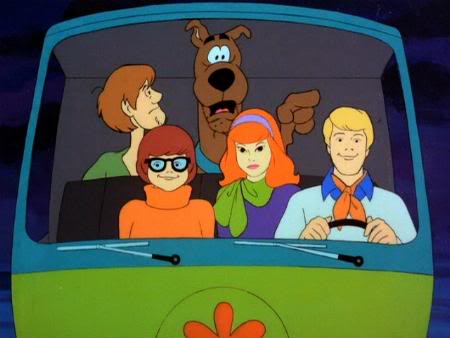The original WWII Willys Jeep was as simple as it gets, no airbags, no seatbelts, no electronics just steel and guts.
It was a light and tough 4x4, easy to work on and you could fix almost anything with basic tools. You could tear the whole Jeep down in less than 5 minutes.
If someone tried to build one today, same size, same style, could it actually pass modern safety and emissions standards?
Or would the rules make a true “modern Willys” impossible?
Curious what engineers, mechanics, and everyone else thinks. It would save people so much money.
You said no airbags and then asked if it could pass modern standards. No of course not if you crash at speed you are dead
Ok so you add airbags, make it road worthy with today’s standards and still make it be able to tear down in 5 minutes. You make it electric to compete with China’s shitty electric vehicles. You make it cheap and easy to fix, no mechanics. Open source vehicle. Universal parts. Frame rusts out, order a new one and just replace it yourself in a day or two.
What makes you say Chinas EVs are shitty? Have you seen any of the specs? Have you heard about any tests? Have you read the recent reports from Western sources about quality?
And if you want to stick with state-side motors, you are likely looking for the Slate EV.
So modernize the vehicle? Sounds like a hobbyists project
Sounds like a dream. But on the unattainable side.
Straight from the original blueprints: heck no, consider the lack of seatbelts to say nothing of emissions.
With a bunch of engineering tweaks but staying close to original: maybe you could get it to be legal, but almost nobody would buy it. The gas mileage would be terrible. Maintenance would suck. Cars have EFI instead of carbeurators now for good reasons. And a car with no air conditioning would be miserable in lots of places.
Anyway if you wanted to do a project in that spirit today, I’d suggest making it all electric, but designed simple, like an e-bike on steroids instead of like a Tesla (which is more like a computer on wheels). Use LFP batteries instead of the higher energy but much more finicky and dangerous Tesla style packs, have some rooftop solar panels, maybe something like a street legal Kei minivan:
https://www.vantagevehicle.com/collections/electric/products/electric-passenger-window-van
You can buy those used in the US for around $5K but their top speed is 40mph, and they are only legal to drive on slower streets. I was a little bit tempted but decided I needed something that can drive on the freeway.
This guys sells a boxed/crate 1942 replica if you are interested
https://thejeepsterman.com/products/jeep-in-crate-mb-1942-willys-jeep
Pretty neat but $15k for a little tub (these things are the size of a modern UTV or Suzuki Samurai) and wheels seems pretty crazy. Not to mention what I imagine to be shipping costs in the range of thousands of dollars. You’ll have to buy an engine, transmission, transfer case, axles, and fuel system which could easily run you another $15k, then assemble it all for another $15k if you’re paying someone, and another $15k for paint and bodywork. Easily $60k for a 1940s era technology with 60HP and absolutely zero creature comforts.
Jerry and Jobe, formerly of Donut Media and currently of Big Time, bought one that was mildly restored from Meacum or Barrett Jackson auctions for something like $14k and they haven’t even been able to sell it again for the same price after.
Then again as a car guy, I can understand the financial decision-making process when it comes to the hobby.
I want the SAS variant with the Vickers machine guns attached. I don’t think I’m allowed one.

In the US, if it was built before 1984 and you pay the ~$400 tax stamps, your dream can come true.
You dare! Win(s)!
You dare! Win(s)!
They do. Mahindra roxor.
Maybe. if you can get it under UTV\ATV rules. I’m not sure what those are but you get a loteof options. It wouldn’t be street leagal, butiin some cases you can drive on a road between off road trails - check local laws. If you want to sell this have your lawyers look as theremay be other exceptions - could you call this a farm vehicle if you add some accessory?
I like the idea. But new vehicles are required at the federal level to have at least airbags, stability control, backup cameras, and soon automatic braking.
And US standards are nothing compared to EU GSR requirements. All sorts of mandatory safety systems are required nowadays.
Yes. Because it is. https://www.hotcars.com/this-country-is-still-producing-ww2-willys-jeep-parts/
Absolutely not in the states though. Whatever came after passing safety regulations wouldn’t be a Willy’s Jeep.
Sadly a simply manufactured, safe, and easy to work on with minimal training vehicle has little profit incentive for the manufacturer and therefore not attractive to venture capital. No one will make and support it if it can’t make them as rich as Elon. From a consumer perspective, I am intrigued, but in the western world I think this is a pipe dream.
The slate truck has been advertising itself as open source; ironically partially funded by Elon, actually.
There’s also been a couple people saying they’d make one for the past several years, if my internet searches are a thing to go by.
This guy just started a company for managing an open source truck project, and he seems pretty serious about it. He just started though, so we aren’t likely to see anything actually come of it for several years. https://mutiny.fm/ https://m.youtube.com/watch?v=G-QgQitWNLY
There’s also the tabby evo, which is for sale right now, but I’m not so sure I’d call that a car so much as a gokart that may or may not be street legal. https://www.openmotors.co/product/tabbyevo/
Not specific to that vehicle, but I think that generally, the way type certification works for vehicles is that existing certifications remain valid for already-manufactured vehicles, but once regulations change, you can’t just go back and produce more of something.
I am confident that doing the Willys in particular would violate existing regulations. One off-the-cuff issue is that the original engine in that thing would have used leaded gasoline, and I’m pretty sure that you can’t make new cars that use leaded gasoline in the US.
EDIT: It might be possible to build an "experimental’ car for yourself — I forget the term, but there’s some class of vehicles in the US that DIYers and experimenters build, and I believe that it has a lighter set of requirements. Even if you could, though, it wouldn’t permit for mass production, which I assume is what you’re after.
kagis
Sounds like at least some, if not all, of that classification is state-level. So I suspect what’s permissible would vary by state.
My brother built his own car, someone from the state had to come out, certify it, and put the VIN stamp on it. Had to have a roll bar, seat belts, and pass modern emissions standards.
For a Willy’s jeep, the best thing you could do is find a roached out one and build it up from scratch. Like a firearm, there are just some key components that have to remain original. The frame and VIN might be all you actually need, and since it’s vintage, you’d only have to pass the safety and emissions standards of that era.
You just have to adjust the engine to run unleaded, should be an easy fix.
In most countries, absolutely not. It would fall so far short of modern safety requirements.
I’d love a modern take, but they only way I can think of getting one would be the classic car market.
The entire design would need to change to meet safety standards. I don’t know that the ease of assembly and cheap low cost would survive the safety requirements.
A lot of the complexity of modern vehicles encompassing not just drivetrain but also exterior design is to squeeze fuel economy from a stone. The shape of the Willy’s isn’t aerodynamic and that’s putting it mildly. Modern standards for body panel tolerances raise component costs. Full time 4x4 is awful on paved roads and terrible for fuel consumption, so we would now use a transfer case or a AWD system, which add cost and complexity. The simplicity of the suspension design made it a death trap at speed - good for off road, no good at 70mph.
My point is that as much as I want a repairable, simple thing (car, computer, etc.) we’ve developed so much technology that even when a thing is designed for repairability, it’s going to need specialized skills to some extent - can’t fix everything with a hammer anymore. Might need a torque wrench.
The current wrangler is an idea of what a modern Willy’s would be like. It’s going to be a $40k vehicle.
ETA - Ineos Grenadier is a modern take on the classic Land Rover. Similar concept, similar departure from simple an cheap.
The current wrangler is an idea of what a modern Willy’s would be like. It’s going to be a $40k vehicle.
It looks like, adjusted for inflation, the original Willy’s MB contract was for about $16k per unit in 1941.
This says that a 2025 Jeep Wrangler starts at $32k, so it’s about twice the price.
https://www.jeep.com/model-compare.wrangler.2025.html
There’s also apparently a “willys” model available that costs $8k more, amusingly, making it less-minimalist and putting it at your $40k.
Yes, and apparently a Chinese company is doing it








